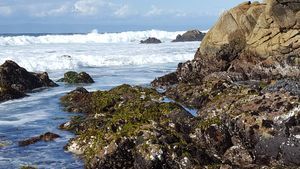Sleuthing in the Elkhorn Slough
 Apr 28, 2017 • 8:23 PM UTC
Apr 28, 2017 • 8:23 PM UTC United States
United States 140x Magnification
140x Magnification Microorganisms
Microorganisms
AHolder
Learn about the author...
3posts
2comments
3locations

Hello Foldscope Community! My name is Anna Holder, and like many others in this community interested in marine ecology, I am in California State University Monterey Bay’s Applied Marine and Watershed Science Master of Science Program . Earlier in the semester, my marine ecology class took a trip out to the Elkhorn Slough National Estuarine Research Reserve . The tidal Elkhorn Slough is located close to the center of Monterey Bay near Moss Landing California, and provides habitat for hundreds of species of plants and animals. It also has a very interesting history of human disturbance and conservation. One prime example of this that still persists is the active railroad track that goes through the Slough! It was quite an experience to see such a large and cacophonous machine travel through a quiet, calm, natural environment.
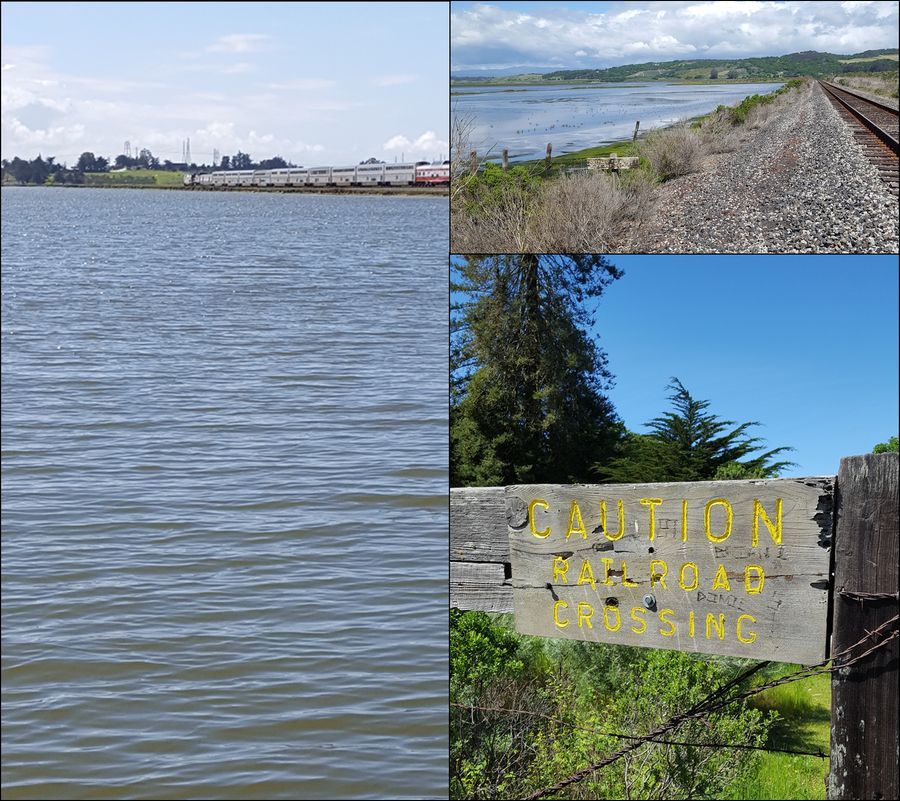
Left: Train driving through the Elkhorn Slough. Upper Right: Train tracks passing through the Elkhorn Slough. Bottom Right: Railroad crossing sign making hikers aware of the live train tracks they are about to cross.
I was so inspired by our field trip out to the Slough that I went back a few weeks later to take a leisurely stroll on the trails and to look at some specimens under my Foldscope. I was able to find some unattached Pickleweed ( Sarcocornia pacifica ). Pickleweed is a perennial herb that is native to California and is found in the upper intertidal in salt marsh habitats. The Elkhorn Slough conducts research on this species, including studies that discuss its distribution over environmental gradients in tidal salt marshes, and how the species is impacted by disturbance. According to Elkhorn Slough scientists, pickleweed has been growing along Elkhorn Slough’s salt marsh habitats for over 6,000 years!
I was so inspired by our field trip out to the Slough that I went back a few weeks later to take a leisurely stroll on the trails and to look at some specimens under my Foldscope. I was able to find some unattached Pickleweed ( Sarcocornia pacifica ). Pickleweed is a perennial herb that is native to California and is found in the upper intertidal in salt marsh habitats. The Elkhorn Slough conducts research on this species, including studies that discuss its distribution over environmental gradients in tidal salt marshes, and how the species is impacted by disturbance. According to Elkhorn Slough scientists, pickleweed has been growing along Elkhorn Slough’s salt marsh habitats for over 6,000 years!
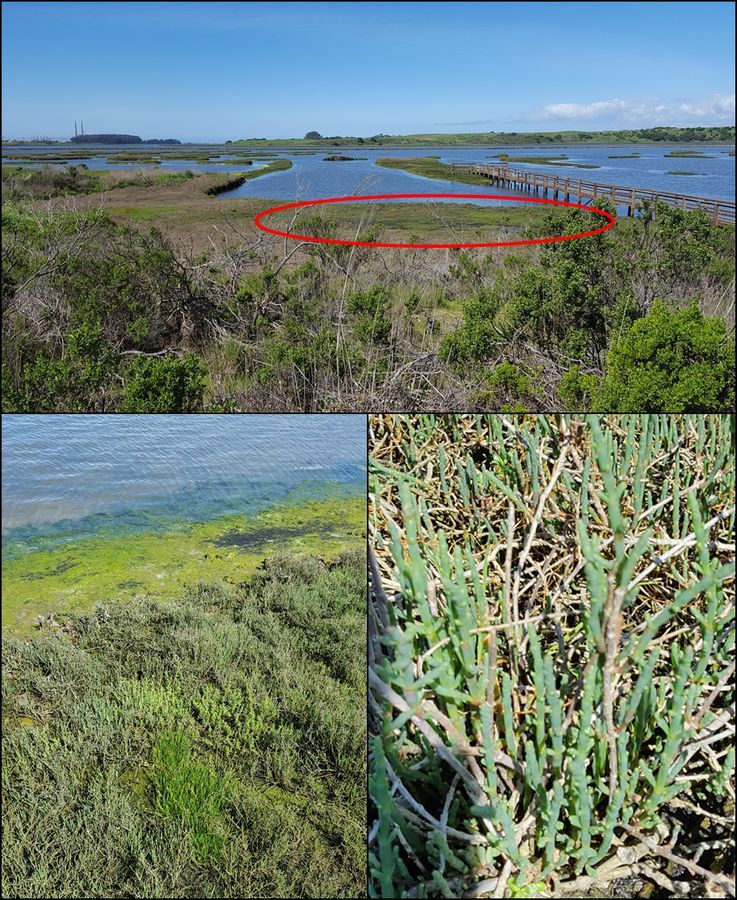
Top: The red oval indicates a patch of pickleweed at the edge of the salt marsh. Bottom Left and Right: Zoomed in photos of pickleweed.
I first tried to put a small branch on a slide and under the scope, but the light couldn’t penetrate though the plant. I ended up cutting one of the branches in half, which allowed light from the Foldscope to penetrate though the specimen.
I first tried to put a small branch on a slide and under the scope, but the light couldn’t penetrate though the plant. I ended up cutting one of the branches in half, which allowed light from the Foldscope to penetrate though the specimen.
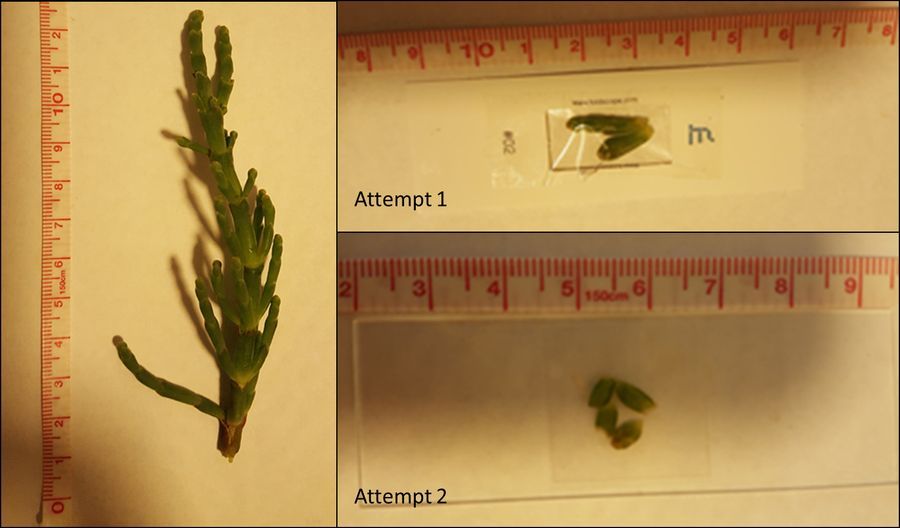
Left: Pickleweed specimen (approximately 11 cm tall). Top right: My first (unsuccessful) attempt at a pickleweed slide. Bottom Right: The usable slide, containing branches that were cut in half which allowed light from the Foldscope to penetrate though the plant.
I was surprised at the amount of detail I was able to see through the Foldscope and my phone’s camera. It took me a while to be able to see and capture images with my phone, but once I was able to hold everything steady it seemed to work out OK.
I was surprised at the amount of detail I was able to see through the Foldscope and my phone’s camera. It took me a while to be able to see and capture images with my phone, but once I was able to hold everything steady it seemed to work out OK.
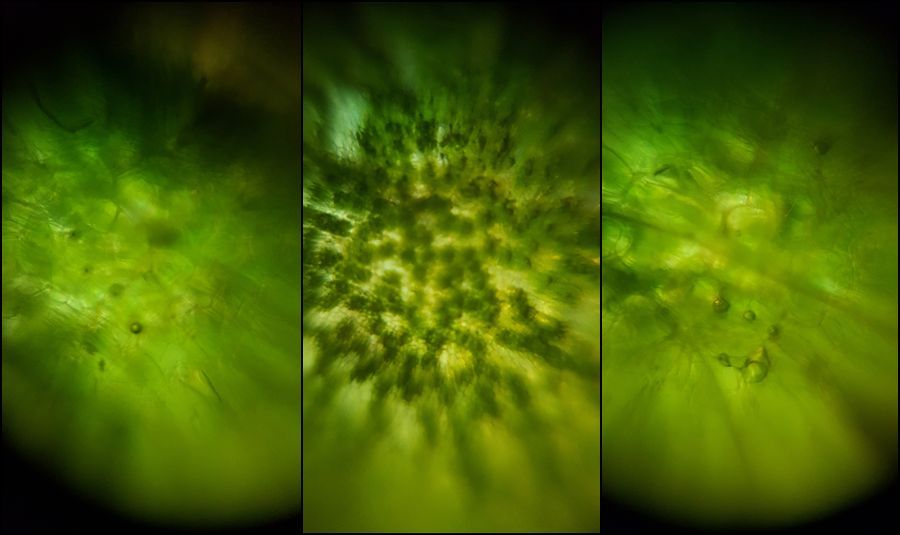
Images of Pickleweed through the Foldscope. You can see individual cells in the images on the left and right. I am not too sure what I was looking at in the middle photo, but it was still exciting to see!
I look forward to becoming more familiar with the Foldscope and trying it out in the intertidal. Stay tuned!
I look forward to becoming more familiar with the Foldscope and trying it out in the intertidal. Stay tuned!
Sign in to commentNobody has commented yet... Share your thoughts with the author and start the discussion!

 0 Applause
0 Applause 0 Comments
0 Comments